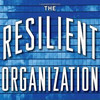 Transport network resilience has 10 properties. So says Pamela Murray-Tuite in her 2006 article A Comparison of Transportation Network Resilience Under Simulated System Optimum and User Equilibrium Conditions. I had completely forgotten about these 10 properties, until I came across them again in an 2013 article on Safeguarding critical transportation infrastructure by Joseph S.Szyliowicz. However, there’s more to the story than just this…
Transport network resilience has 10 properties. So says Pamela Murray-Tuite in her 2006 article A Comparison of Transportation Network Resilience Under Simulated System Optimum and User Equilibrium Conditions. I had completely forgotten about these 10 properties, until I came across them again in an 2013 article on Safeguarding critical transportation infrastructure by Joseph S.Szyliowicz. However, there’s more to the story than just this…
Too many posts to remember
The reason for looking deeper into Szyliowicz’ paper in the first place was that I had searched academic literature databases for references of my papers to see whether any of the papers I had written was making an impact. In Szyliowicz’ paper I found that he had cited a blog post I wrote in 2011, about The UK Transport Network Resilience…and I. Looking it it up, I discovered that I had mentioned Murray-Tuite’s ten properties in my own blog post 4 years ago. So why did I forget about them? Too many posts to remember, perhaps. Besides I never mentioned Murray-Tuite as a reference in the post or as a worthy paper in my literature review list, otherwise I might have remembered her, I guess. I only copied Murray-Tuite’s definitions from the report I was reviewing in that blog post.
Not her own
Anyway, upon re-reading the article by Murray-Tuite I realised the ten properties were not all her creation, but taken from other authors. Six out of ten came from a 2003 paper on Urban Hazard Mitigation: Creating Resilient Cities by David Godschalk. Ouestions of originality aside, she does deserve credit for taking the concept of resilience from the realm of urban planning and adopting it to the realm of transport planning. Moving ideas from one realm to another is not always straightforward. Murray-Tuite also deserves solid credit for describing and quantifying four of these properties with regard to transport networks.
Ten properties of resilience
According to Murray-Tuite, the ten properties of resilience in transport network are redundancy, diversity, efficiency, autonomous components, strength, adaptability, collaboration, mobility, safety, and the ability to recover quickly.
Redundancy – the transport system contains a number of functionally similar components which can serve the same purpose and hence the system does not fail when one component fails (for example, a number of similar routes are available with spare capacity).
Diversity – the transport system contains a number of functionally different components in order to protect the system against various threats (for example, alternative modes of transport are available).
Environmental Efficiency – a transport system which is environmentally efficient will be more sustainable, and capacity is less likely to be constrained due to environmental reasons.
Autonomy – the components of the transport system are able to operate independently so that the failure of one component does not cause others to fail (for example, can the transport system operate safely in the event of a power cut?).
Strength – the transport systems ability to withstand an incident (for example, how extreme a flood event can the system cope with?).
Adaptability – or flexibility, can the transport system adapt to change and does it have the capacity to learn from experience (for example, an area-wide traffic management system can adapt to differing traffic conditions).
Collaboration – information and resources are shared among components and/or stakeholders (for example, contingency plans in the event of an emergency and the ability to communicate with system users).
Mobility – travellers are able to reach their chosen destinations at an acceptable level of service.
Safety – the transport system does not harm its users or expose them, unduly, to hazards.
Recovery – the transport system has the ability to recover quickly to an acceptable level of service with minimal outside assistance after an incident occurs.
The first six are taken from Godschalk, and mobility is taken from the page called Evaluating Transportation Resilience on the Victoria Policy Institute website. On a sidenote, some of my works have also been included there, namely, The vulnerability of road networks in a cost-benefit perspective, a paper I presented at TRB in 2005.
Seven properties of resilience
In the opriginal paper, if it can be put that way, Godschalk actually lists seven properties of resilience. The seventh, interdependence, was apparently not found applicable by Murray-Tuite. I wonder why, because Godschalk defines this property as such
Interdependent: with system components connected so that they support each other
In my opinion a resilient transport network should definitely be interdependent in the way that Godschalk describes it.
On another sidenote, Godschalk also refers to the Victoria Policy Institute website as one of his references. However, given the year Godschalk wrote his paper, that website and their TDM Encyclopedia was probably still in its infancy.
The resilient city
One paragraph that really struck a cord with me is where Godschalk describes his view of the ideal resilient city:
Resilient cities are constructed to be strong and flexible, rather than brittle and fragile. Their lifeline systems of roads, utilities, and other support facilities are designed to continue functioning in the face of rising water, high winds, shaking ground, and terrorist attacks. Their new development is guided away from known high hazard areas, and their vulnerable existing development is relocated to safe areas. Their buildings are constructed or retrofitted to meet code standards based on hazard threats. Their natural environmental protective systems are conserved to maintain valuable hazard mitigation functions. Finally, their governmental, non-governmental, and private sector organizations possess accurate information about hazard vulnerability and disaster resources, are linked with effective communication networks, and are experienced in working together.
In some way that is exactly what I am trying to do in my day job as a Resilience Adviser, with the lifeline system of roads being the starting point.
Resilience and redundancy
Going back to Szyliowicz, his paper focuses on the various facets of resilience, although most of the paper is spent on what the US has done or not done or perhaps should have done since 9/11 to increase resilience in the transport infrastructure. That said, I do sense that he is ever so slightly inclined towards redundancy as a key ingredient in resilience. Moreover, he credits me with quoting transit planning consultant Bob Bourne for saying that
‘‘Redundancy is not favored by policy makers and can add to costs. However, a system with excess capacity will perform well in times of crisis and will provide additional service during normal times.’’(cited in Husdal, 2011).
Honestly, I never mentioned Bob Bourne in my blog post on resilience. I even checked the web archive to see if it was ever there. What I did find though, with the help of Google, was a 2011 blog post by transit planning consultant Jarret Walker, who cited Bob for those exact words. So much for due diligence…
Thirty-one properties of resilience
On a final note, Godschalk in his paper references Harold D. Foster and his book The Ozymandias Principles: Thirty-one Strategies for Surviving Change. That book features no less than 31 dimensions of resilience, divided by social, physical, environmental, operational, economic, systems and time dimension. It’s not an easy book to get one’s head around, but one day I will present the book on this blog
Reference
Murray-Tuite, P. (2006) A Comparison of Transportation Network Resilience Under Simulated System Optimum and User Equilibrium Conditions. Proceedings of the 38th Conference on Winter Simulation, Monterey, CA, USA — December 03 – 06, 2006 DOI: 10.1109/WSC.2006.323240
Godschalk, D. (2002) Urban Hazard Mitigation: Creating Resilient Cities. Nat. Hazards Rev., 4(3), 136–143 DOI: 10.1061/(ASCE)1527-6988(2003)4:3(136)
Szyliowicz, J. (2013) Safeguarding critical transportation infrastructure: The US case. Transport Policy, Volume 28, Pages 1-122 (July 2013) DOI: 10.1016/j.tranpol.2012.09.008
Author links
- linkedin.com: Pamela Murray-Tuite
- linkedin com: David Godschalk
- linkedin.com: Joseph Szyliowicz
Related posts
- husdal.com: UK Transport Resilience
- husdal.com: Resilience as a job description












